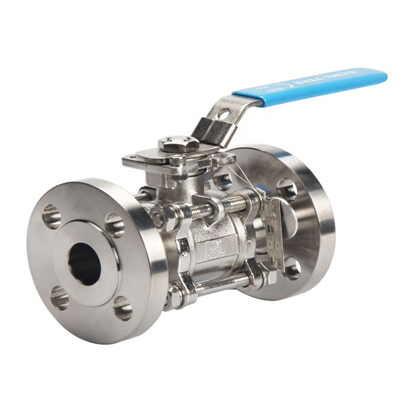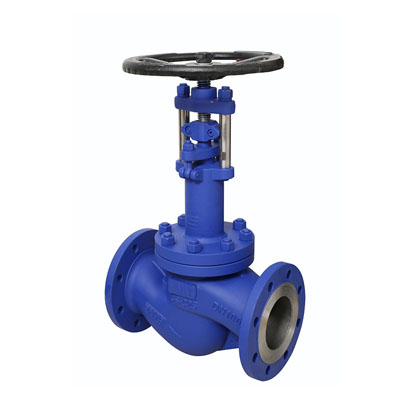What Is Difference Between Ball Valve and Globe Valve?
Ball valves and globe valves are two commonly used types of valves in industrial applications. While both valves control the flow of fluids, they have distinct designs and functionalities that make them suitable for different applications. In this response, I will explain the differences between ball valves and globe valves.
Flanged Floating High Pressure Stainless Steel Ball Valve
Ball Valves:
Design: Ball valves have a spherical ball-shaped disc with a hole (bore) through the center. The ball has a port that aligns with the flow path when the valve is open and blocks the flow when the valve is closed. The ball is rotated 90 degrees by the valve handle or actuator to control the flow.
Flow Characteristics: Ball valves offer a straight-through flow path when fully open, which minimizes pressure drop and allows for efficient fluid flow. They provide low resistance to flow and are well-suited for applications that require on/off control or quick shutoff.
Sealing Mechanism: Ball valves typically have a floating or trunnion-mounted ball. The sealing is achieved through the use of resilient seats, such as Teflon (PTFE) or elastomeric materials, that provide a tight seal against the ball. This sealing mechanism ensures minimal leakage when the valve is closed.
Operation: Ball valves are generally operated with a quarter-turn motion, making them quick and easy to open or close. They are commonly actuated with a lever, handle, or actuator, allowing for manual or automated operation.
Applications: Ball valves are widely used in various industries and applications, including oil and gas, chemical processing, water treatment, HVAC systems, and more. They are suitable for applications requiring tight shutoff, high flow rates, low pressure drop, and frequent operation.
Globe Valves:
Design: Globe valves have a linear motion design, with a disc or plug that moves up and down along a vertical axis to control the flow. The disc is typically perpendicular to the flow path when fully open and closes against the seat to block the flow when closed.
Flow Characteristics: Globe valves provide excellent throttling control, allowing for precise regulation of flow rates. They offer a more gradual flow characteristic compared to ball valves, with a higher pressure drop due to the multiple changes in flow direction.
Sealing Mechanism: Globe valves use a disc or plug and seat arrangement for sealing. The disc or plug is pressed against the seat by a stem connected to the valve handle or actuator, creating a tight seal. This design provides a higher level of sealing integrity, minimizing leakage when the valve is closed.
Operation: Globe valves require multiple turns of the valve handle or actuator to open or close fully. The linear motion operation allows for precise flow control, making them suitable for applications that require throttling or regulating the flow.
Applications: Globe valves are commonly used in industries such as power generation, oil refineries, chemical plants, and water treatment facilities. They are well-suited for applications that require fine flow control, such as steam systems, control systems, and situations where the flow rate needs to be adjusted based on process conditions.
Key Differences:
Flow Control: Ball valves provide straight-through flow when fully open, offering low resistance and efficient flow. Globe valves offer precise throttling control, allowing for gradual flow adjustment.
Pressure Drop: Ball valves have a lower pressure drop due to their straight-through flow design. Globe valves have a higher pressure drop due to changes in flow direction.
Operation: Ball valves have a quarter-turn operation, allowing for quick and easy opening or closing. Globe valves require multiple turns for full operation, providing more precise flow control.
Leakage: Both valve types offer good sealing capabilities, but ball valves generally have lower leakage rates due to their resilient seat materials and sealing mechanisms.
Applications: Ball valves are commonly used in applications that require quick shutoff, high flow rates, and frequent operation. Globe valves are suitable for applications that require precise flow control, such as throttling or regulating flow rates.
In summary, ball valves and globe valves have different designs, flow characteristics, and applications. Ball valves are well-suited for on/off control, provide low resistance to flow, and are often used in applications requiring frequent operation. Globe valves excel in precise flow control and are commonly used for throttling or regulating flow rates. Understanding the specific requirements of the application and the desired flow characteristics will help in selecting the appropriate valve type.
298
0
0




Comments
All Comments (0)